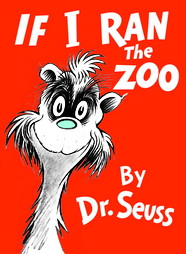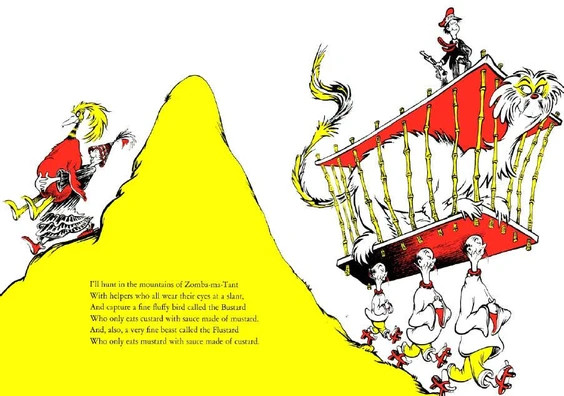If I Ran the Zoo (Book)

If I Ran the Zoo
1950 AD - 2021 AD
When young Gerald McGrew visits the zoo, he discovers that the exotic animals are "not good enough." He says that if he ran the zoo, he would set all of the current animals free and find new, more bizarre and exotic ones. Throughout the book he lists these creatures, starting with a lion with ten feet and escalating to more imaginative (and imaginary) creatures, such as the Fizza-ma-Wizza-ma-Dill, "the world's biggest bird from the island of Gwark, who eats only pine trees, and spits out the bark."
The illustrations also grow wilder as McGrew imagines going to increasingly remote and exotic habitats, capturing each fanciful creature, and bringing them all back to a zoo now filled with his new wild animals. He also imagines the praise he receives from others, who are amazed at his "new Zoo, McGrew Zoo".
If I Ran the Zoo has been criticized for its use of racial stereotypes and caricatures. In a 1988 biography of Dr. Seuss, Ruth K. MacDonald notes the perceived presence of "occasional stereotypes of native peoples—potbellied, thick-lipped blacks from Africa, squinty-eyed Orientals," that "may offend some modern readers."
A study published in the journal Research on Diversity in Youth Literature noted the perceived presence of dehumanizing stereotypes of East Asian, Sub-Saharan African and Middle Eastern characters.[4] The Canadian Book and Periodical Council's Freedom to Read project listed the book as having been challenged in 2015 for "insensitivity and ethnic stereotyping."
Events (2)
for 
Attachments
Land of Zomba-ma-tant where locals “wear their eyes at a slant” illustrationthat led to the withdrawl of If I Ran the Zoo









